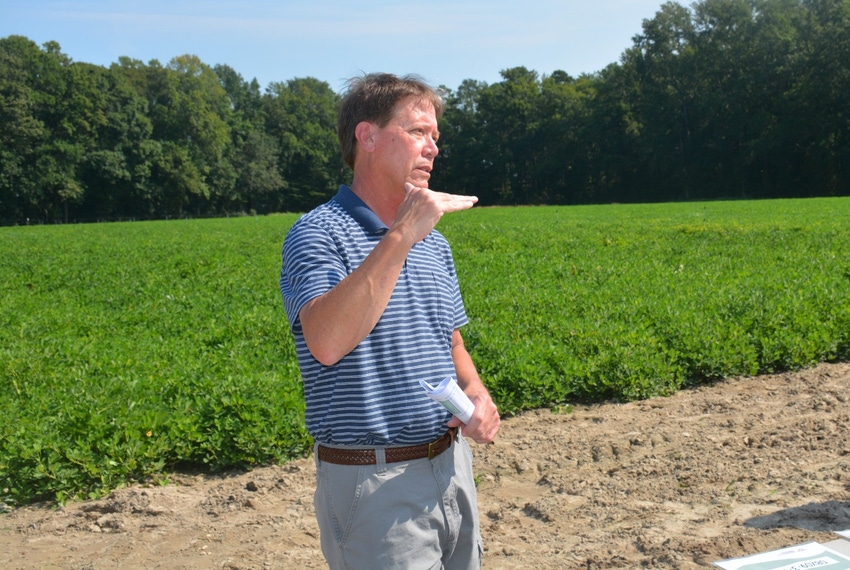
When it comes to the supply and demand situation, peanuts are “still trying to right the ship from the 2017 crop which was absolutely huge,” according to Dell Cotton, manager of the Peanut Growers Cooperative Marketing Association and executive secretary of the Virginia Peanut Growers Association.
Providing a market update at the Peanut Variety Quality Evaluation (PVQE) Tour at the Taylor Slade farm in Williamston, N.C., Sept. 12, Cotton said the exceptionally large 2017 peanut crop was almost two crops together in one year which has really impacted the market since then.
Peanut acreage did drop in 2018 from 2017 which helped lower supplies somewhat.
Cotton said peanut acreage this year is slightly less than 2018, but essentially the same as last year.
“Probably the biggest change is in the V-C (Virginia-Carolinas) area, and that’s because of South Carolina,” Cotton said. “South Carolina, back in the old days before the (quota) program changed, had 10,000 acres. That was in 2002. Since that time, South Carolina has steadily increased acreage. They were as high as about 120,000 acres two years ago. This year, they are at 65,000 acres, so they are pretty much half what they were two years ago.”
Cotton said the big drop in peanut acreage in South Carolina is a “matter of climbing too high too quick. They are taking a break and trying to get their rotations back in order.” Weather has played a role as well.”
“If there has been anybody hammered by weather in the last four or five years, it’s been South Carolina. They have cut back on peanuts, for the most part cutting back on runners rather than Virginia-types,” Cotton said.
When it comes to consumption, he said the peanut industry is doing okay, but “not setting the world on fire” with gains of about one to two percent per year. He said peanut exports are okay, but the situation isn’t doing much to help farmers with prices.
“Hopefully we can see that change as we get rid of the excesses from the 2017 crop. We had excesses like this one time before and that was from the 2015 crop. What happened the following year (in 2016) is China came in and took all the excess. China is not taking the excess this year. We are exporting some to China, but they are not taking the quantity they took in 2016; I wish they would,” Cotton said.
Cotton said tariffs are part of the problem and if China came in and bought the surplus like they did following the big 2015 crop, it would be a totally different marketing story this year.
“On the marketing side, a lot is going to depend on this year’s crop. This year’s crop should be less than what we’ve been used to the last couple of years. Hopefully, we can continue to eat into the excess, which will lead to a better price next year and a better situation,” Cotton said
About the Author(s)
You May Also Like






